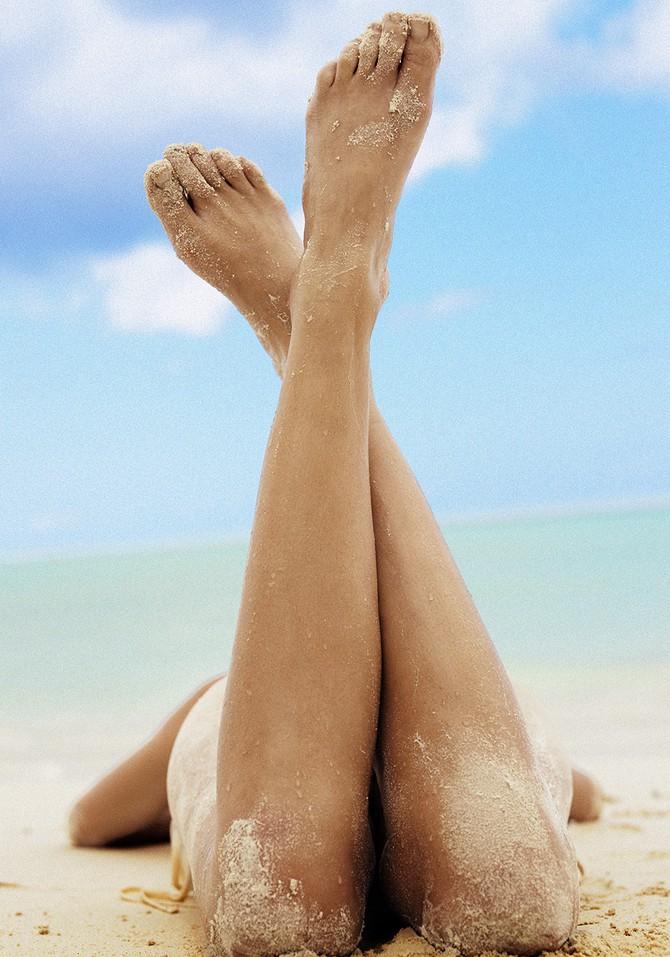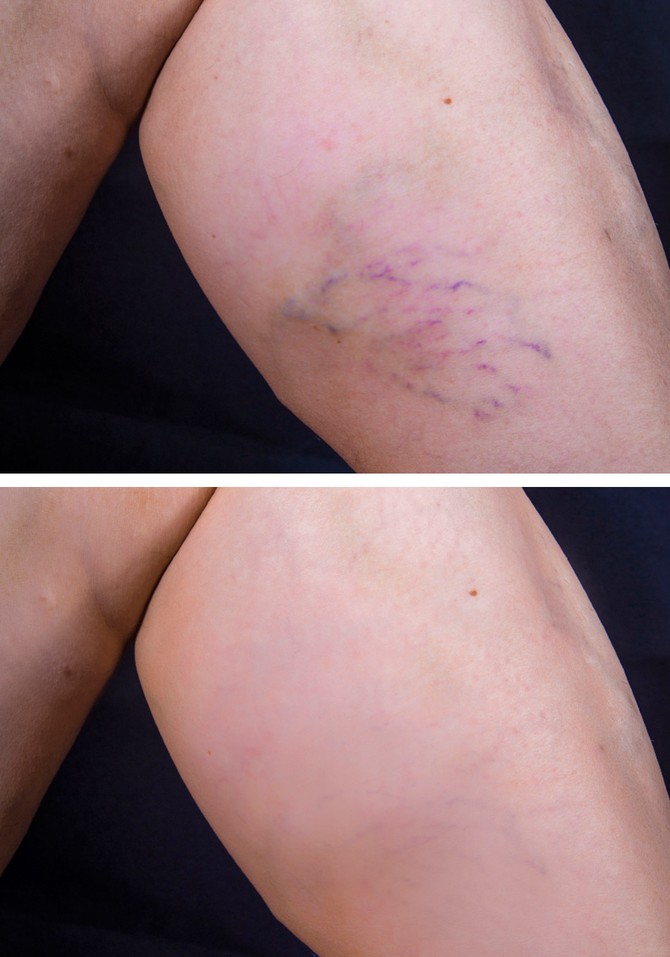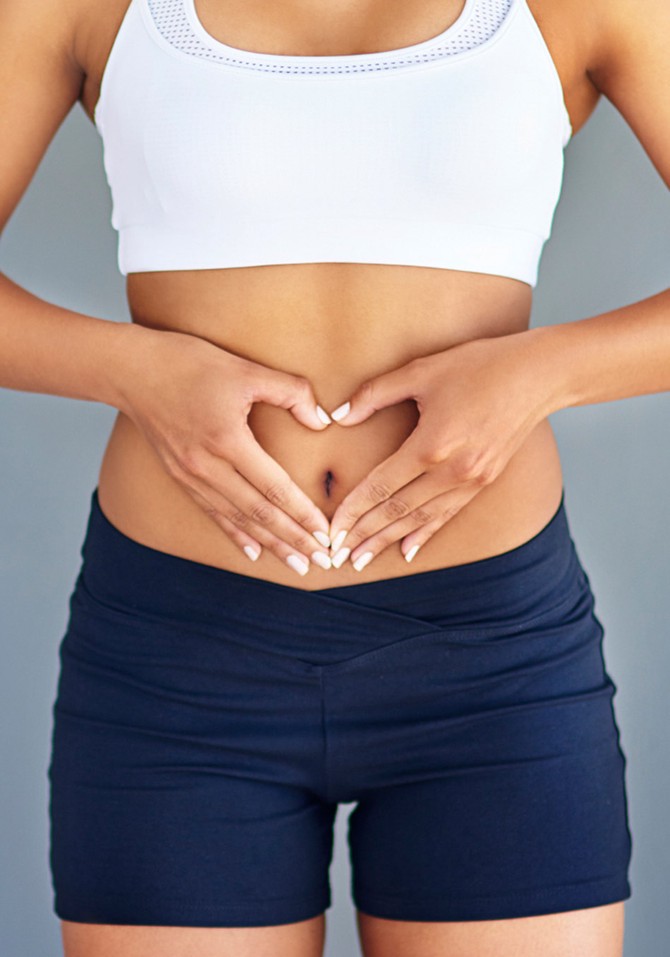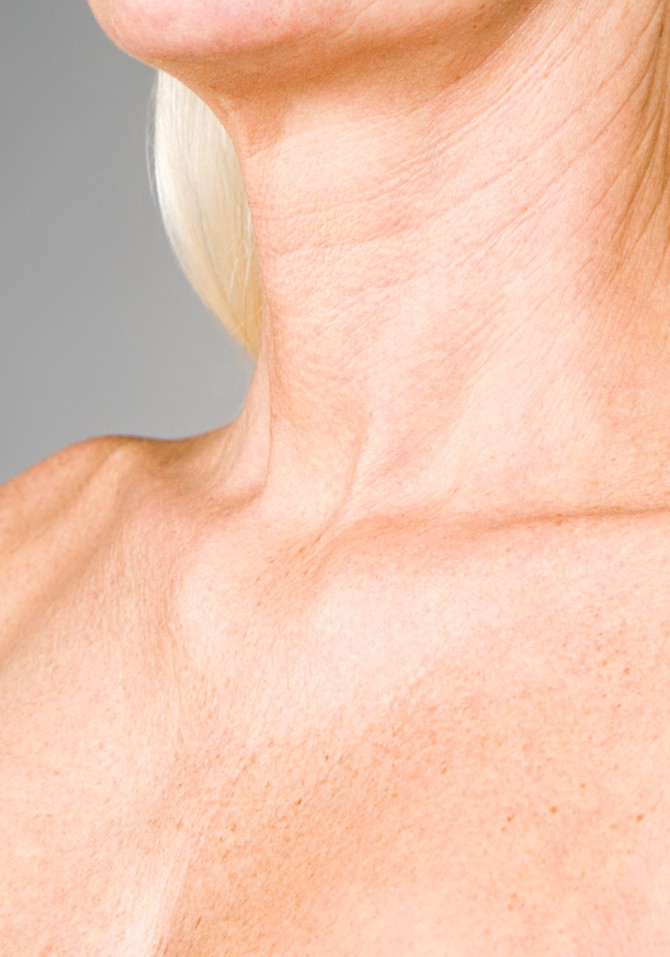4 Solutions for the Most Common Skin Problems
Don't let a few flaws keep you off the beach this summer. At-home and in-office treatments can make these common bugaboos things of the past.

Photo: Chris Craymer/Trunk Archive
1. Cellulite
At home: Though you'll probably be the only one to notice a difference, you can temporarily diminish that upholstered-cushion look with a cream or gel containing caffeine, which enhances blood flow and briefly decreases swelling, says Tina Alster, MD, clinical professor of dermatology at Georgetown University Medical Center.
At-home essential: Perricone MD Cold Plasma Body ($110; perriconemd.com)
In office: Cellfina
How it works: After injecting local anesthesia into the affected area, the doctor uses a handheld device to suction the skin and then slides in a needle to break the fibrous bands that cause dimples, says Ava Shamban, MD, assistant clinical professor of dermatology at the David Geffen School of Medicine at UCLA. Results are apparent in three days and can last up to two years.
Number of treatments: one
Average cost: $3,500 to $5,500
At-home essential: Perricone MD Cold Plasma Body ($110; perriconemd.com)
In office: Cellfina
How it works: After injecting local anesthesia into the affected area, the doctor uses a handheld device to suction the skin and then slides in a needle to break the fibrous bands that cause dimples, says Ava Shamban, MD, assistant clinical professor of dermatology at the David Geffen School of Medicine at UCLA. Results are apparent in three days and can last up to two years.
Number of treatments: one
Average cost: $3,500 to $5,500

Photo: PositiveFocus/iStock
2. Visible Veins
At home: If your veins don't bother you enough to warrant a pricey doctor's office fix, camouflage them with self-tanner or a body bronzer.
At-home essentials: Josie Maran Argan Liquid Gold Self-Tanning Oil ($38; sephora.com), L'Oréal Paris Sublime Bronze Summer Express Wash-Off Body Makeup Lotion ($11; drugstores)
In office: Sclerotherapy
How it works: A detergent is injected into spider or varicose veins to collapse them.
Number of treatments: two to three (two weeks apart)
Average cost: $500 to $1,000 per treatment
Caveat emptor: Treated veins will not return, but new ones will likely appear, so you may have to repeat the treatment every year, says Harold Lancer, MD, a Beverly Hills dermatologist.
In office: Filler
How it works: Filler is injected into the skin surrounding any large blue veins on hands or feet; the plumping reduces the appearance of the veins, says Lancer. Results last one to two years.
Number of treatments: two (three to four weeks apart)
Average cost: $600 to $1,200 per treatment
At-home essentials: Josie Maran Argan Liquid Gold Self-Tanning Oil ($38; sephora.com), L'Oréal Paris Sublime Bronze Summer Express Wash-Off Body Makeup Lotion ($11; drugstores)
In office: Sclerotherapy
How it works: A detergent is injected into spider or varicose veins to collapse them.
Number of treatments: two to three (two weeks apart)
Average cost: $500 to $1,000 per treatment
Caveat emptor: Treated veins will not return, but new ones will likely appear, so you may have to repeat the treatment every year, says Harold Lancer, MD, a Beverly Hills dermatologist.
In office: Filler
How it works: Filler is injected into the skin surrounding any large blue veins on hands or feet; the plumping reduces the appearance of the veins, says Lancer. Results last one to two years.
Number of treatments: two (three to four weeks apart)
Average cost: $600 to $1,200 per treatment

Photo: PeopleImages/iStock
3. Stretch Marks
At home: A prescription retinoid or an OTC retinol used regularly can improve matters appreciably, says Annie Chiu, MD, a dermatologist in Redondo Beach, California. It's most effective when stretch marks are new and still red; mature stretch marks that have turned white are more resistant to treatment. To conceal white ones, use self-tanner.
At-home essential: Murad Firm and Tone Serum ($60; murad.com)
In office: Fractional Nonablative Laser
How it works: Heat is delivered deep into the dermis, stimulating collagen production and plumping the skin so it appears smoother, says Chiu.
Number of treatments: three to four (a month apart)
Average cost: $500 to $1,000 per treatment
In office: Radiofrequency
How it works: Radiofrequency energy heats collagen below the skin's surface, causing it to contract, so skin eventually tightens, says Chiu.
Number of treatments: two to four
Average cost: $500 to $1,000 per treatment
In office: Pulsed Dye Laser
How it works: Green or yellow light neutralizes the redness of new stretch marks, says Chiu.
Number of treatments: three (a month apart)
Average cost: $500 to $1,000 per treatment
At-home essential: Murad Firm and Tone Serum ($60; murad.com)
In office: Fractional Nonablative Laser
How it works: Heat is delivered deep into the dermis, stimulating collagen production and plumping the skin so it appears smoother, says Chiu.
Number of treatments: three to four (a month apart)
Average cost: $500 to $1,000 per treatment
In office: Radiofrequency
How it works: Radiofrequency energy heats collagen below the skin's surface, causing it to contract, so skin eventually tightens, says Chiu.
Number of treatments: two to four
Average cost: $500 to $1,000 per treatment
In office: Pulsed Dye Laser
How it works: Green or yellow light neutralizes the redness of new stretch marks, says Chiu.
Number of treatments: three (a month apart)
Average cost: $500 to $1,000 per treatment

Photo: IS_ImageSource/iStock
4. Chest Discoloration
At home: Apply an OTC cream with niacinamide, a form of vitamin B3 that regulates melanin and diminishes the appearance of brown spots, says Debra Jaliman, MD, a NYC dermatologist.
At-home essential: Olay Total Effects Body Lotion ($9; drugstores)
In office: Fractional Laser
How it works: A pixelated beam vaporizes microscopic areas of the skin, encouraging regeneration of collagen and evening out pigmentation.
Number of treatments: two (a month apart)
Average cost: $1,500 per treatment
In office: Intense Pulsed Light
How it works: Beams of light are absorbed by melanin, damaging existing dark spots and causing them to break down and eventually flake off, says Jaliman.
Number of treatments: one to three (a month apart)
Average cost: $750 per treatment
At-home essential: Olay Total Effects Body Lotion ($9; drugstores)
In office: Fractional Laser
How it works: A pixelated beam vaporizes microscopic areas of the skin, encouraging regeneration of collagen and evening out pigmentation.
Number of treatments: two (a month apart)
Average cost: $1,500 per treatment
In office: Intense Pulsed Light
How it works: Beams of light are absorbed by melanin, damaging existing dark spots and causing them to break down and eventually flake off, says Jaliman.
Number of treatments: one to three (a month apart)
Average cost: $750 per treatment
From the June 2016 issue of O, The Oprah Magazine

